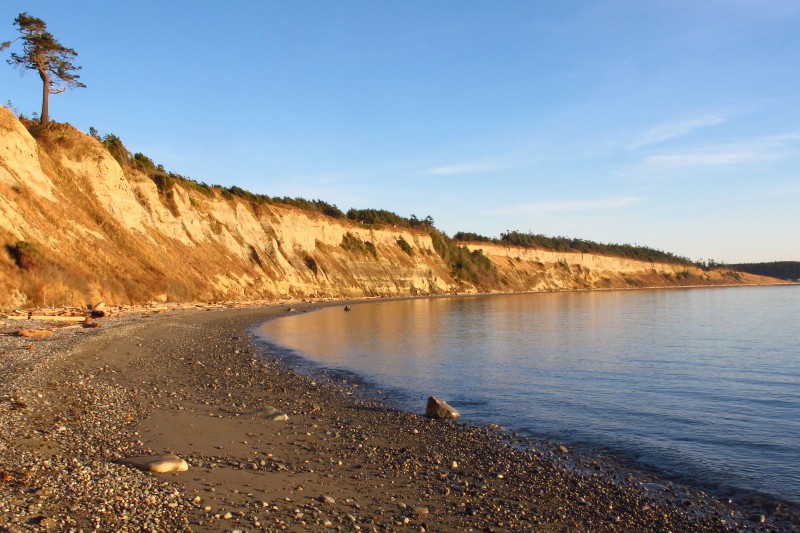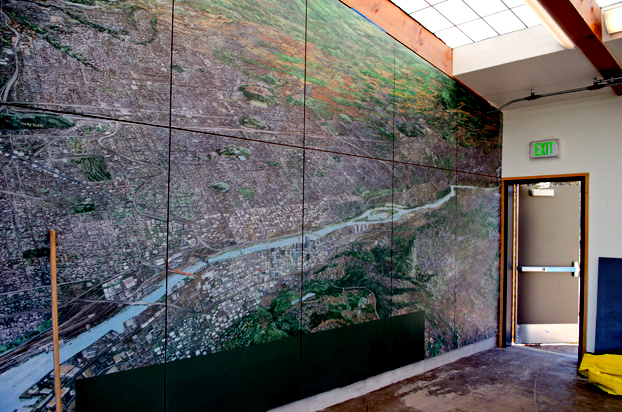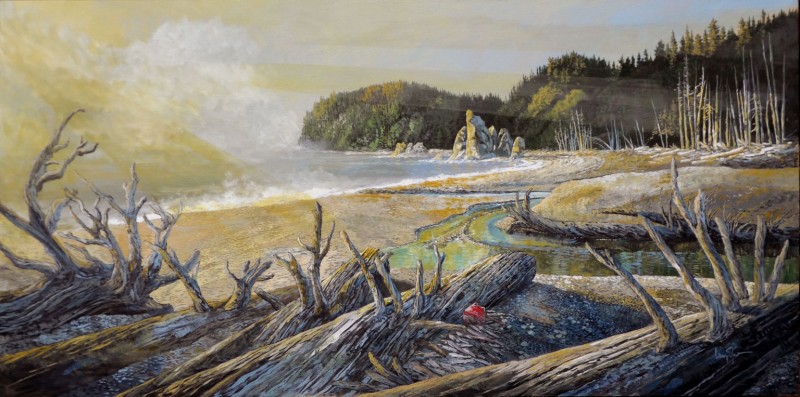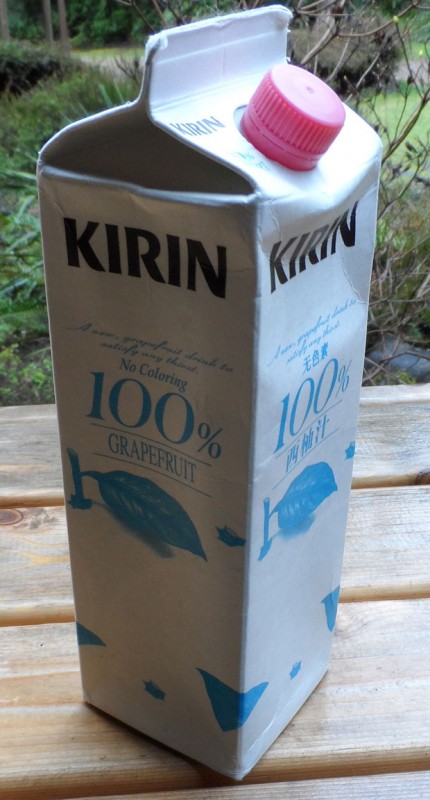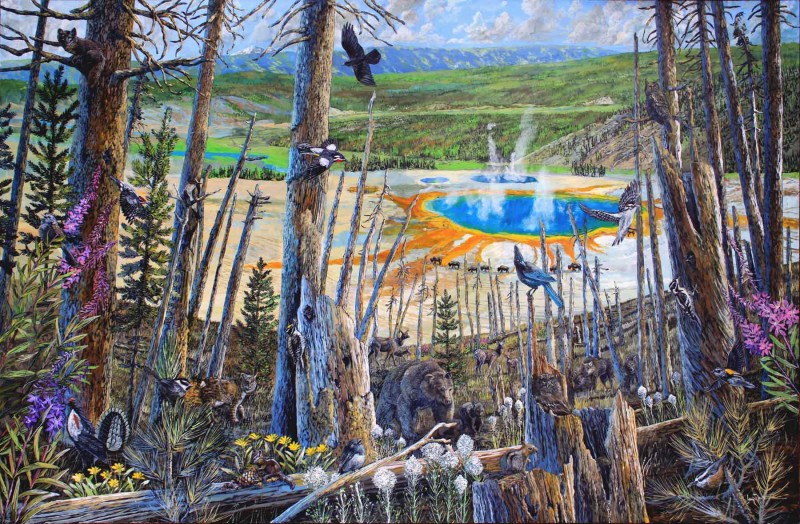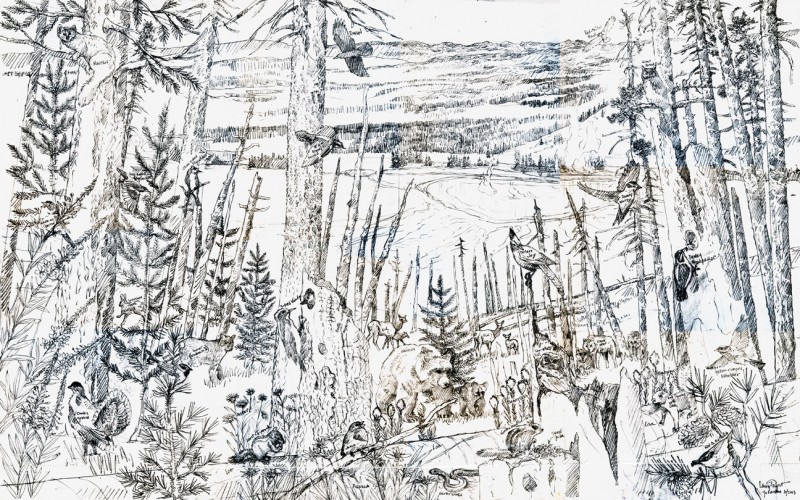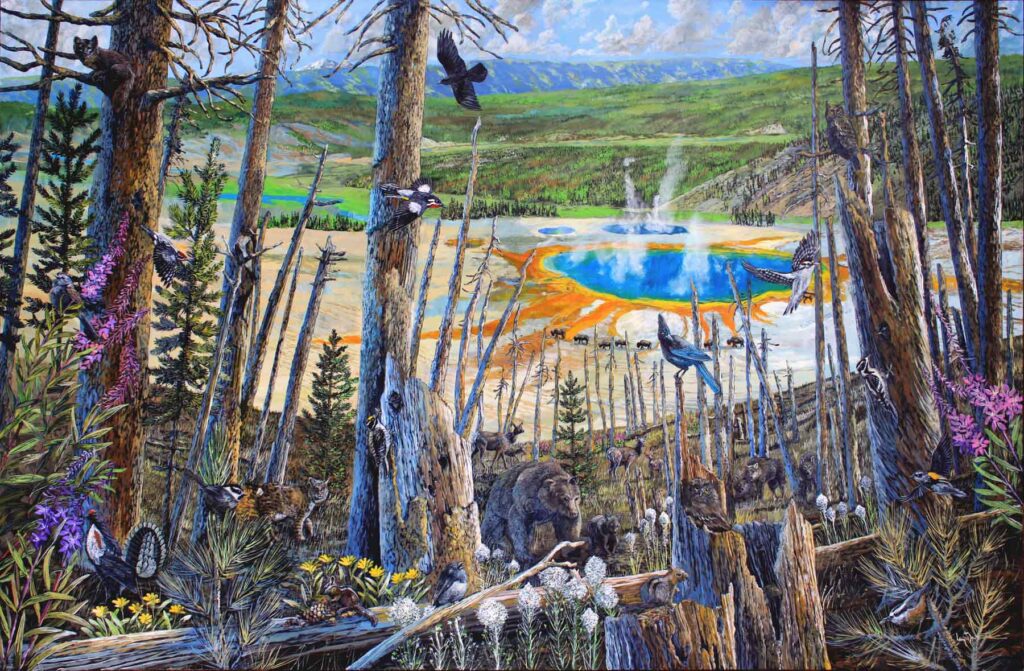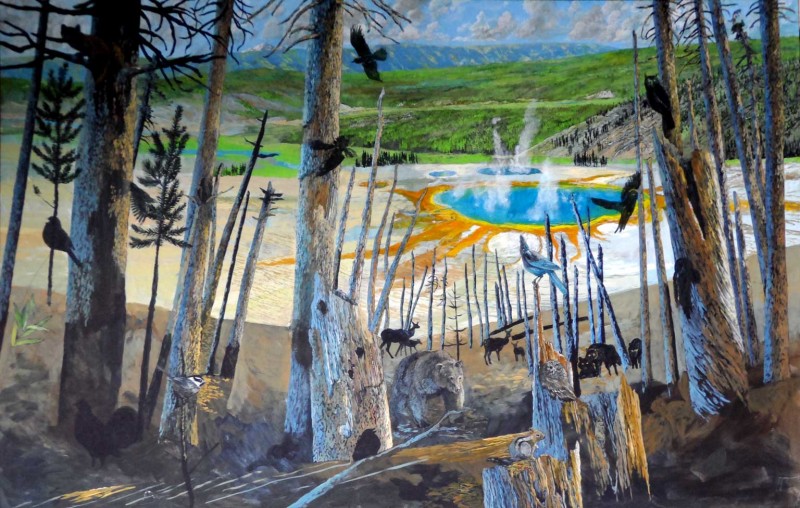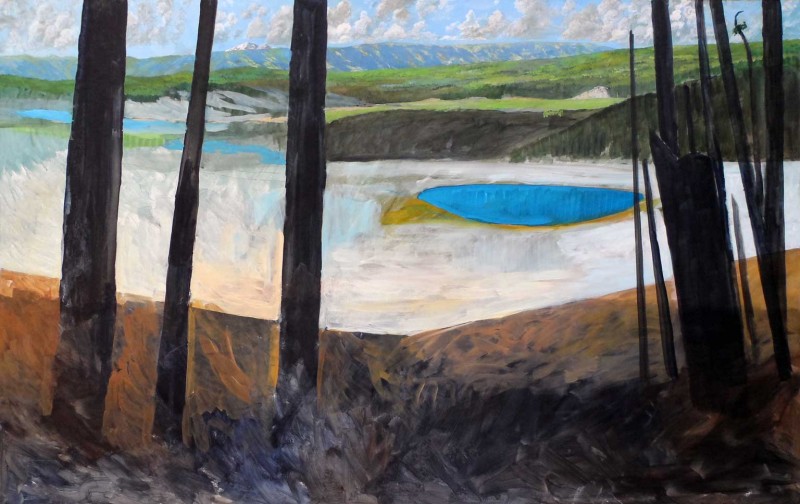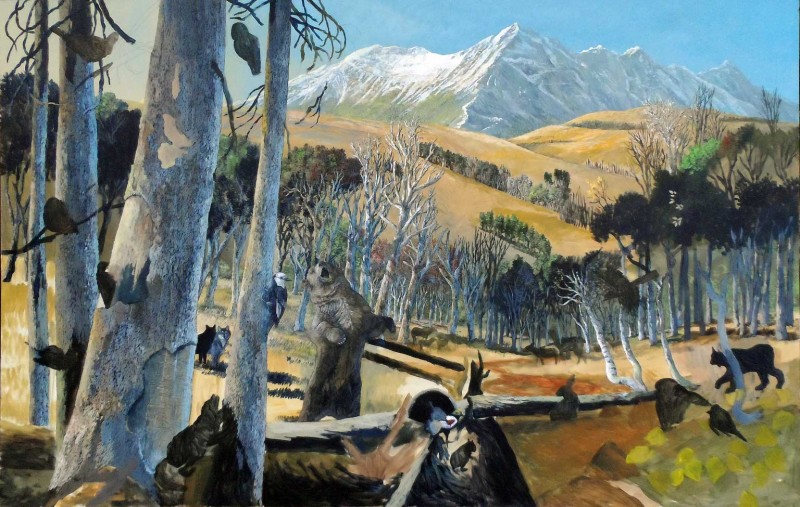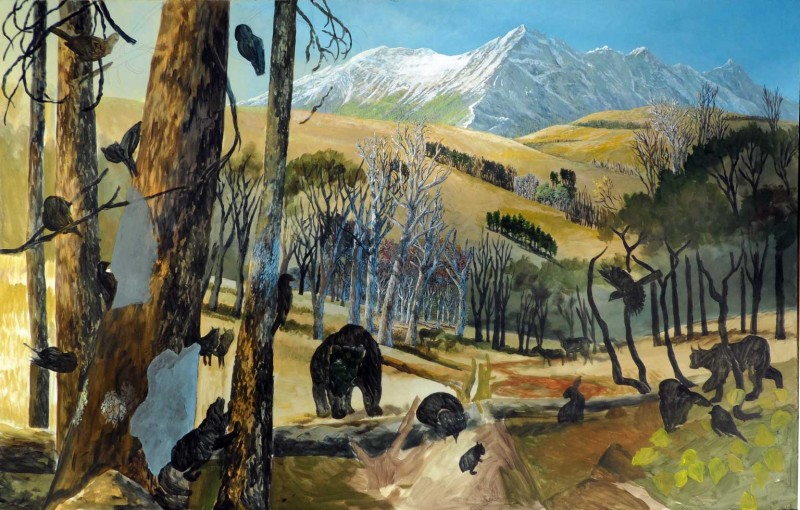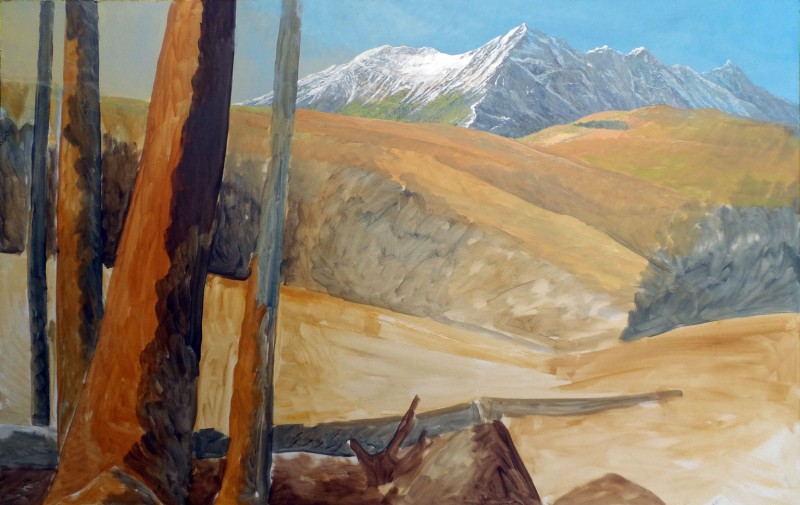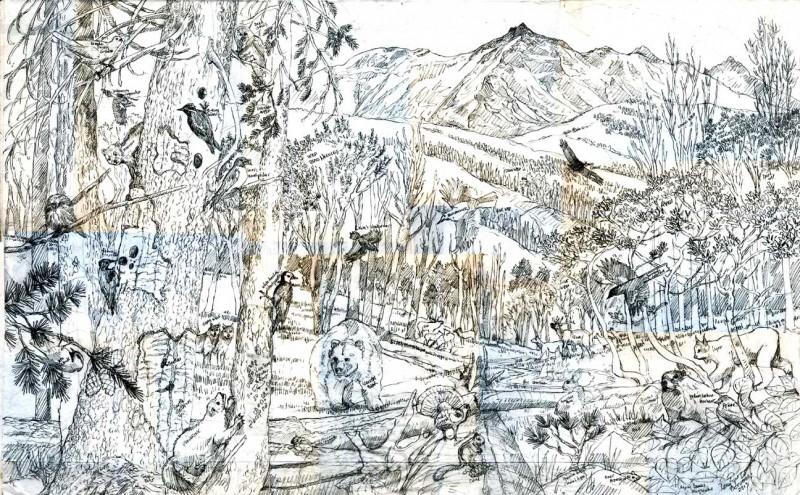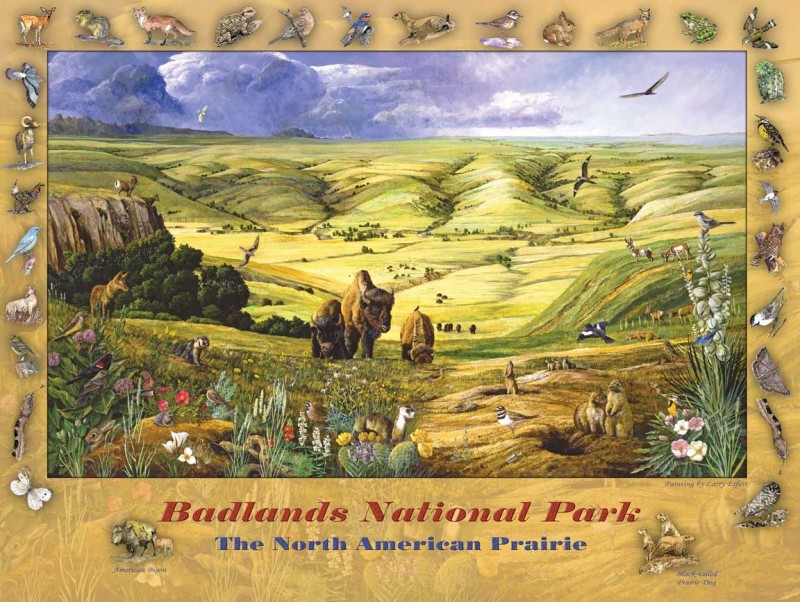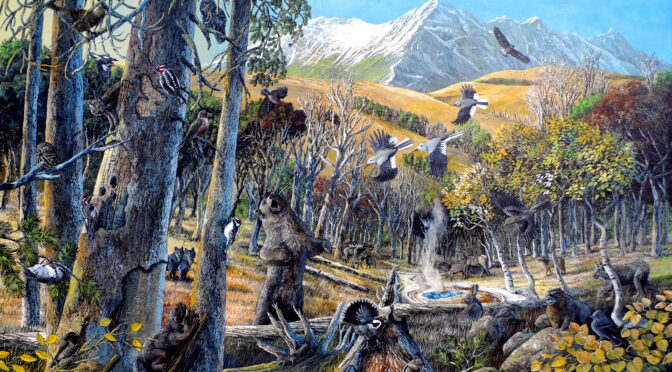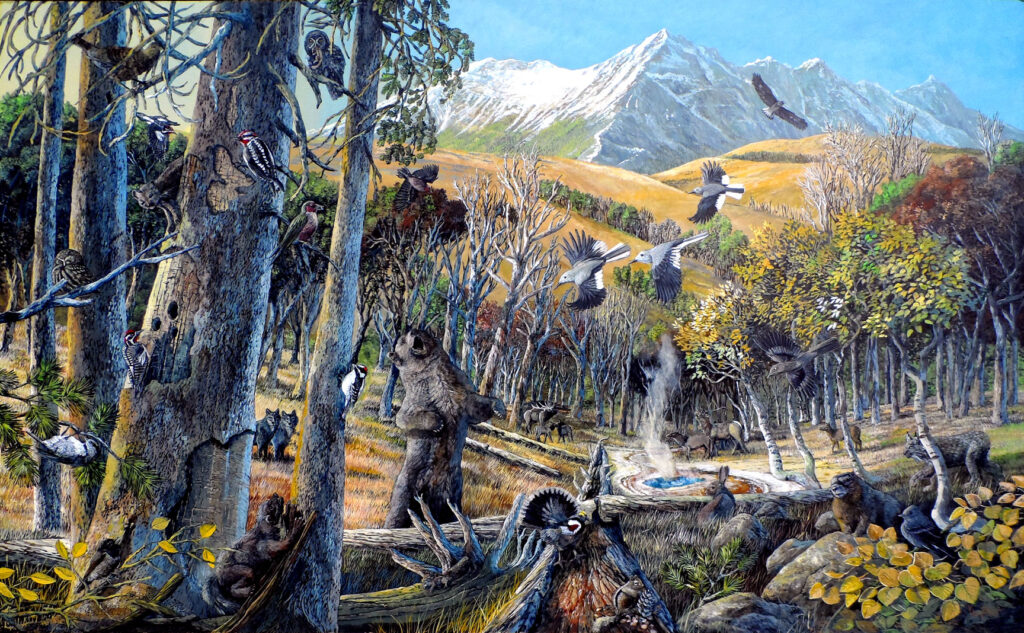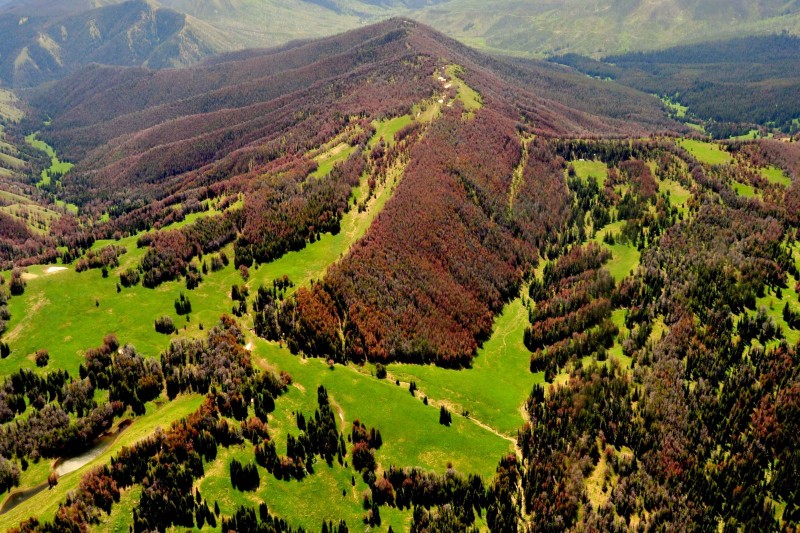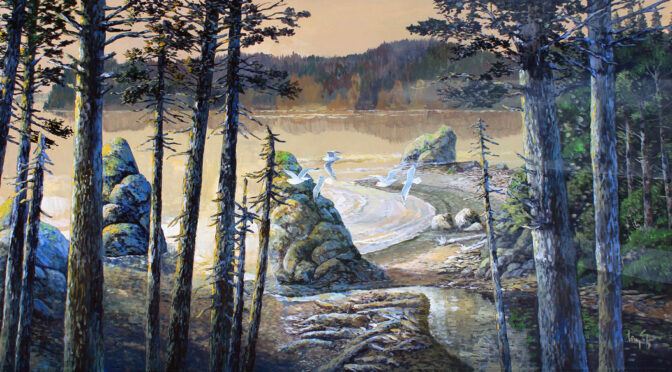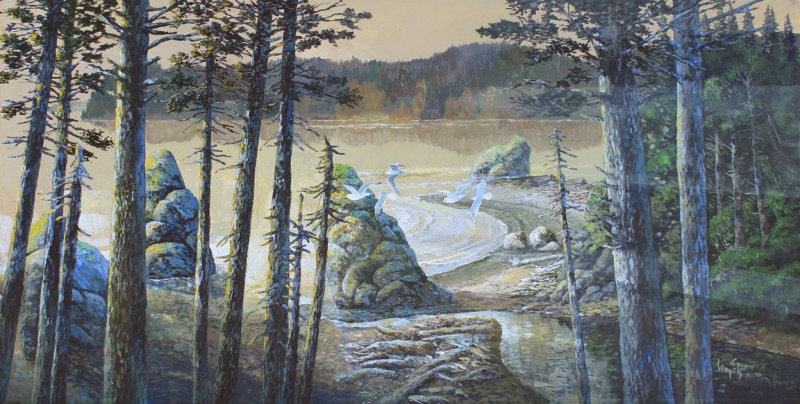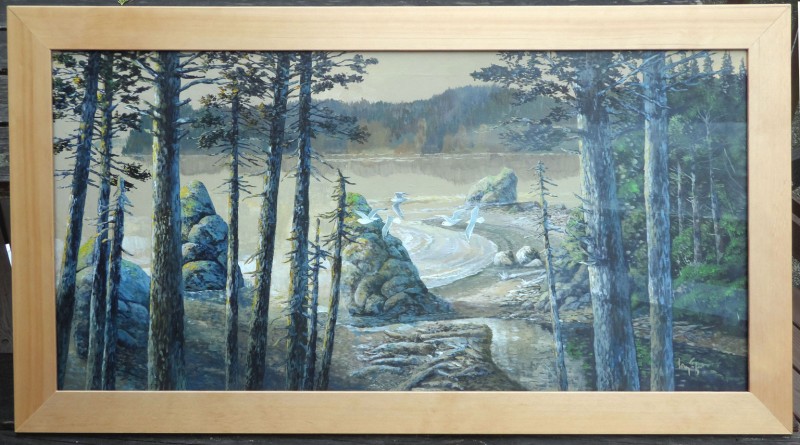
Click the image and it will enlarge in your browser.
A new project unfolds! Rarely do I get to do a bunch of paintings of something I truly love and know already. Or do it for a local park and do it for a group as tasty as this. I’m painting some small murals, doing design and handling fabrication for trail exhibits for the Whidbey Camano Land Trust – just to the north of us. It’s actually part of the Ebey’s Landing National Historical Reserve, and, in fact, I often sail over to Whidbey Island right under the bluff where these installations will soon be installed in the Admiralty Inlet Natural Area Preserve. Here’s the location -right on the bluff-top to the left. Port Townsend is to the right just across the channel.
Photo thanks to Mark Sheehan, WCLT
Above is the first sketch, already underway as a painting. Four other paintings come as soon as possible – and that’s the catch. All five plus fabrication and installation have to be finished up and installed in three months – a daunting task for some, but not the manic me. I’m just a slave to my paintbrush! This first painting is about the forest on the ridgetop, a very rare coastal old-growth forest. Being on a bluff at the downwind end of the Straits of Juan de Fuca, this forest sees some pretty violent weather, so the bluff-top trees have grown very gnarly and wind-flagged. But, back in the quieter part, a more normal forest shelters a marvelous bunch of critters, and that’s what this painting is all about. It’s also an island that was under ice until just 8.000 years ago, so there are some wildly odd critters missing, like native rabbits, moles, bobcats and others normally found around here but not on Whidbey. No moles? Humm. This is the part of my job I dearly love, that of learning all this stuff from people who love it, like Mark, Ida and Jessica and Janelle, Whidbey Islanders who are helping me figure it out. And I, in turn, hope I’m helping them create something that will effect people for years to come.
And I just have to share this. An old friend and fellow artist, John Sturgeon, who teaches video at the University of Maryland recently contacted me, or maybe it was the other way around. There were four of us in the same year, same high school art classes that went on to life-long art careers – a rather high percentage, I think. John told me something I’ve suspected, but never heard from anyone who might know: “The general consensus is… that by five years out of art school about 10% are still practicing, and by 10 years out it drops to 5% . . . then more or less stays there. However, those that make a living from it [making art instead of teaching art] . . . less than .05%, which is astounding. You are among that small % my friend. Pretty damn cool. ” Trouble is, I never really went to art school to learn how to do this stuff.
Thanks for reading this week.
Larry Eifert
Here’s the blog on the web. And here’s my Facebook fan page. I post lots of other stuff there.
Click here to go to our main website – with jigsaw puzzles, prints, interpretive portfolios and lots of other stuff.
Nancy’s web portfolio of beautiful photographs
And Click here to go to Virginia Eifert’s website. Her books are now becoming available as Amazon Kindle books. I currently have five up, with 15 more coming.


